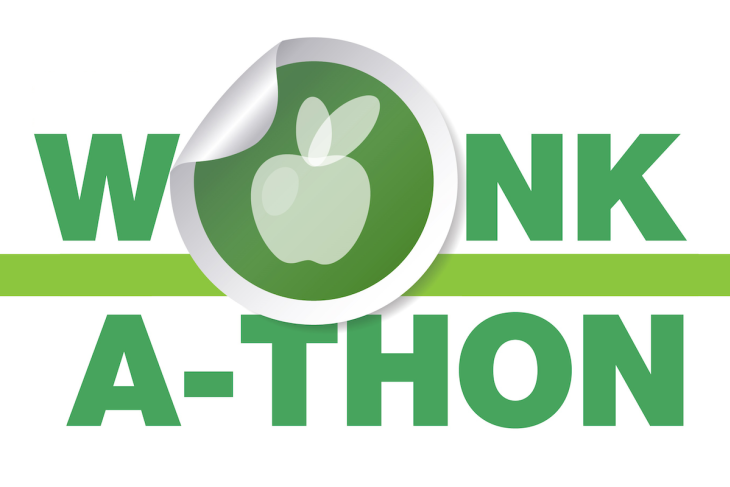Editor’s note: This was the second-place submission, out of nineteen, to Fordham’s 2019 Wonkathon, in which we asked participants to answer the question: “What’s the best way to help students who are several grade levels behind?”
Meet William. As he entered seventh grade at a Philadelphia Mastery Charter School, William (not his real name) was struggling with basic math concepts. On the nationally normed MAP assessment he took that winter, William scored in the 12th percentile. Like too many students across the country, William was frustrated in math class.
But thanks to a new, more strategic approach to teaching middle school math implemented last year, students like William started showing impressive progress. Last spring, his MAP score placed him in the 31st percentile nationally. This fall, as an eighth-grader, William no longer needs those supports and is spending more time on grade-level math work, and early signs show continued progress. On a recent benchmark test, William scored at the network median in math.
It might seem a classic paradox but, from our experience, students like William are often the rule not the exception. Because of this, we felt it was our obligation to the families we serve to take this challenge on directly, and we felt well-positioned to do so. Mastery is a public network of twenty-four schools serving over 14,000 students in Philadelphia and Camden. Sixteen of our schools are turnarounds of previously struggling district and charter schools. We are the largest turnaround school operator in the nation.
Two years ago, we committed as a network to deeply tackling our math problem. Nearly one-third of our students were in the lowest quintile in the nation and performing below basic on state assessments. These students were several grade levels behind and unlikely to catch up without intense intervention.
As Chief Academic Officer, I know effective teachers and high-quality curriculum can accelerate student achievement. However, to reach our students with the most unfinished learning we needed more than that: The challenge required a multi-pronged strategy that was tailored to meet their needs while also fitting into our broader organizational instructional culture. And we needed it to be executed at scale. As I scanned the field, hoping to buy a packaged intervention program to address the magnitude of our challenge, I came up empty handed.
Were we trapped in an impossible conundrum? In a word, no.
We began the work by partnering with an external math consultant with deep knowledge of the Common Core. We identified the students targeted for this new program: children who were in the bottom decile nationally and not yet meeting expectations on state assessments. We designed a scope and sequence of content that prioritized the major work of the grade, and we made the hard choice to deprioritize up to one-third of the additional math standards. We wove prior grade lessons into daily instruction (thirty minutes per day), sometimes going back two, three, or four years to spiral foundational concepts. We packaged the lessons together into student and teacher workbooks so the experience for both children and adults was similar to core math instruction. We rostered these students together for the new math course, called Foundations Math, and added more time so students have ninety minutes of math instruction daily. Finally, we defined the intellectual preparation routines and professional development experiences for our teachers. The entire program was then enveloped with a strong focus on mathematical mindsets to build student confidence.
This is the second year that our schools are implementing the Foundations Math course in middle school. In its short life to date, this new program has shown promising growth: Students are growing faster as measured by MAP and more students are moving out of “below basic” on Pennsylvania and New Jersey state assessments. William, in fact, moved from below basic to basic on his state assessment last school year.
Foundations Math is one example of a strategy for how to help students who are several grade levels behind, at scale:
- Packaging materials to support teachers’ focus on strong lesson execution;
- Prioritizing the major work of the grade and intentionally spiraling prerequisite content, linked to the grade level learning;
- Allocating extra time for students to practice grade level content and prior grade skills;
- Investing in professional learning experiences and intellectual preparation for teachers to strengthen both their content knowledge and practice.
Our design approach to Foundations Math is based on an obsession about quality execution at scale.
While this approach is showing positive results in its early stages of implementation, we are aware that certain conditions must be in place if it is to succeed at scale and over the long haul. First and foremost, it requires talented teachers with the requisite experience, who feel comfortable in classrooms where differentiation is the norm. It’s also essential to have high-quality materials in place (Foundations Math is built upon EngageNY’s open source materials).
William’s story is still unfolding along with the story of Foundations Math. But what we’ve seen so far validates our new approach to differentiated middle school math instruction.
With this, we offer a call to action to the field: In order to close the tenacious opportunity gap, we need vetted solutions that can be sustained at scale and we must commit to these solutions for all students, not only our students with unfinished learning but also students with special needs and English language learners.
We are excited to keep tracking progress and sharing what we have learned so others can learn from our experiences.




